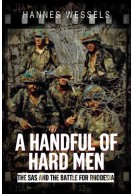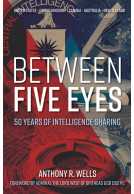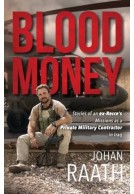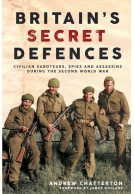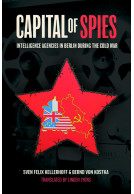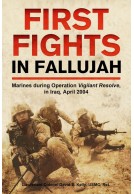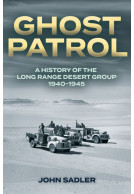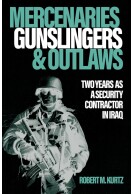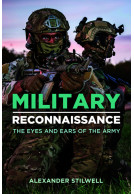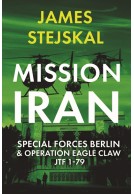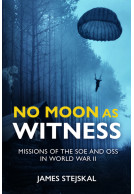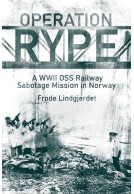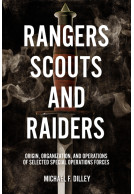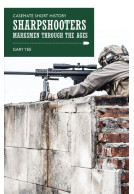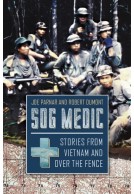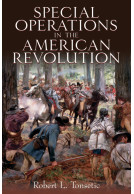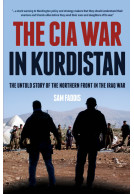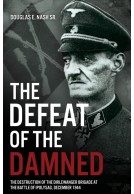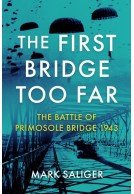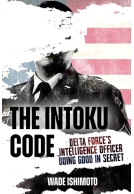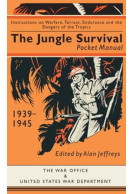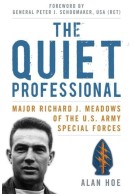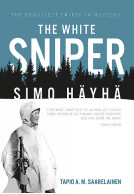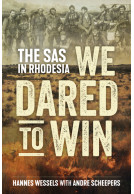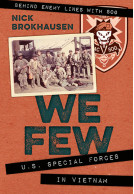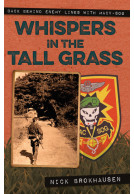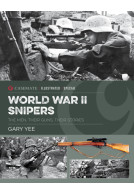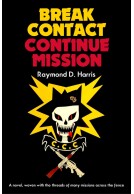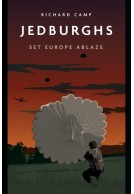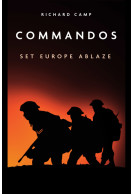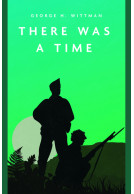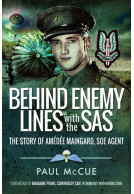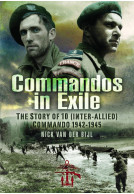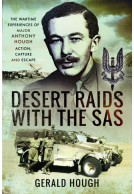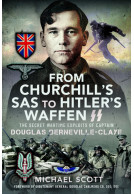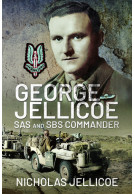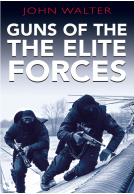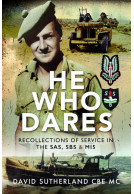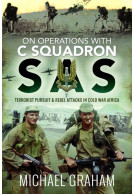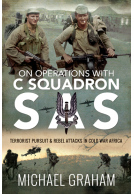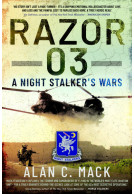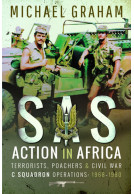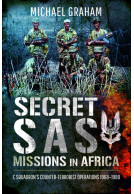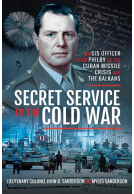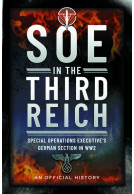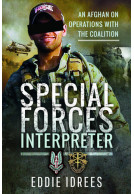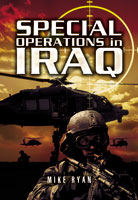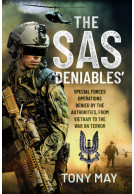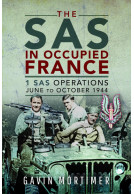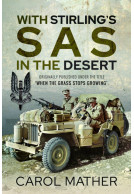Special Forces and Rogue Heroes
Enjoy 30% off all* books below until 23rd February 2025. Please note titles are organised by publisher and alphabetically. *Pre-orders and New Releases are only available at 20% off RRP.
Casemate
A Handful of Hard Men (Hardback)
The SAS and the Battle for Rhodesia
During the West’s great transition into the post-Colonial age, the country of Rhodesia refused to succumb quietly, and throughout the 1970s fought back almost alone against Communist-supported elements that it did not believe would deliver proper governance. During this long war many heroes emerged, but none more skillful and courageous than Captain Darrell Watt of the Rhodesian SAS, who placed himself at the tip of the spear in the deadly battle to resist the forces of Robert Mugabe and Joshua Nkomo. It is difficult to find another soldier’s story to equal Watt’s in terms of time spent on the field of battle and challenges faced. Even by the lofty standards of the SAS and Special Forces, one has to look far to find anyone who can match his record of resilience and valor in the face of such daunting odds and with resources so paltry. In the fight he showed himself to be a military maestro. A bush-lore genius, blessed with uncanny instincts and an unbridled determination to close with the enemy, he had no peers as a combat-tracker (and there was plenty of competition). But the Rhodesian theatre was a fluid and volatile one in which he performed in almost every imaginable fighting role; as an airborne shock-trooper leading camp attacks, long range reconnaissance operator, covert urban operator, sniper, saboteur, seek-and-strike expert, and in the final stages as a key figure in mobilizing an allied army in neighboring Mozambique. After 12 years in the cauldron of war his cause slipped from beneath him, however, and Rhodesia gave way to Zimbabwe. When the guns went quiet Watt had won all his battles but lost the war. In this fascinating biography we learn that in his twilight years he is now concerned with saving wildlife on a continent where they are in continued danger, devoting himself to both the fauna and African people he has cared so deeply about.American Guerrilla (Paperback)
The Forgotten Heroics of Russell W. Volckmann—the Man Who Escaped from Bataan, Raised a Filipino Army against the Japanese, and became the True “Father” of Army Special Forces
With his parting words “I shall return,” General Douglas MacArthur sealed the fate of the last American forces on Bataan. Yet one young Army Captain named Russell Volckmann refused to surrender. He disappeared into the jungles of north Luzon where he raised a Filipino army of over 22,000 men. For the next three years he led a guerrilla war against the Japanese, killing over 50,000 enemy soldiers. At the same time he established radio contact with MacArthur’s HQ in Australia and directed Allied forces to key enemy positions. When General Yamashita finally surrendered, he made his initial overtures not to MacArthur, but to Volckmann.This book establishes how Volckmann’s leadership was critical to the outcome of the war in the Philippines. His ability to synthesize the realities and potential of guerrilla warfare led to a campaign that rendered Yamashita’s forces incapable of repelling the Allied invasion. Had it not been for Volckmann, the Americans would have gone in “blind” during their counter-invasion, reducing their efforts to a trial-and-error campaign that would undoubtedly have cost more lives, materiel, and potentially stalled the pace of the entire Pacific War.
Second, this book establishes Volckmann as the progenitor of modern counterinsurgency doctrine and the true “Father” of Army Special Forces - a title that history has erroneously awarded to Colonel Aaron Bank of the ETO. In 1950, Volckmann wrote two Army field manuals: Operations Against Guerrilla Forces and Organization and Conduct of Guerrilla Warfare, though today few realize he was their author. Together, they became the Army’s first handbooks outlining the precepts for both special warfare and counter-guerrilla operations. Taking his argument directly to the Army Chief of Staff, Volckmann outlined the concept for Army Special Forces. At a time when U.S. military doctrine was conventional in outlook, he marketed the ideas of guerrilla warfare as a critical force multiplier for any future conflict, ultimately securing the establishment of the Army’s first special operations unit—the 10th Special Forces Group.
Volckmann himself remains a shadowy figure in modern military history, his name absent from every major biography on MacArthur, and in much of the Special Forces literature. Yet as modest, even secretive, as Volckmann was during his career, it is difficult to imagine a man whose heroic initiative had more impact on World War II. This long overdue book not only chronicles the dramatic military exploits of Russell Volckmann, but analyzes how his leadership paved the way for modern special warfare doctrine.
Between Five Eyes (Hardback)
50 Years of Intelligence Sharing
“Few people are as uniquely well equipped as Anthony Wells to write an account of these close and special relationships. His penetrating and informed analysis offers us all hope for the continuance of an alliance which makes the world a safer place." - VICE ADMIRAL SIR JEREMY BLACKHAM, Knight Commander of the Bath, editor, The Naval ReviewUK-US intelligence and the wider Five Eyes community of Canada, Australia and New Zealand is primarily about one main thing, relationships. In this remarkable book, Anthony Wells charts fifty years of change, turmoil, intense challenges, successes and failures, and never-ending abiding UK-US and Five Eyes relationships. He traces the development of institutions that he firmly believes have sustained and indeed may have saved the free world, Western democracies and their allies from those ill disposed to the value system and culture of our nations. More than a chronology of the UK-US intelligence community during this fifty-year period, it is also a personal insight into key relationships and how the abiding strengthof the United States and the United Kingdom and its Five Eyes allies relationships. The author has relied on his own extensive unclassified collection of papers, personal notes, diaries, as well as his family library for source material to create this book.
Blood Money (Hardback)
Stories of an ex-Recce’s Missions in Iraq
‘I remember the cracking sound of the AK-47 bullets as they tore through our windscreen . . . A piece of bullet struck my bulletproof vest in the chest area and another piece broke off and lodged in my left forearm.’Johan Raath and a security team were ambushed in May 2004 while on a mission to reconnoitre a power plant south of Baghdad for an American firm. He had been in the country for only two weeks. This was a taste of what was to come over the next few years as he worked as a private military contractor (PMC) in Iraq.
His mission? Not to wage war but to protect lives. Raath and his team provided security for engineers working on reconstruction projects in Iraq. Whether in the notorious Triangle of Death, in the deadly area around Ramadi or in the faction-ridden Basra, Raath had numerous hair-raising experiences.
Key to his survival was his training as a Special Forces operator, or Recce.
This riveting account offers a rare glimpse into the world of private military contractors and the realities of everyday life in one of the world’s most violent conflict zones.
Britain's Secret Defences (Hardback)
Civilian saboteurs, spies and assassins during the Second World War
The narrative surrounding Britain’s anti-invasion forces has often centred on ‘Dad’s Army’-like characters running around with pitchforks, on unpreparedness and sense of inevitability of invasion and defeat. The truth, however, is very different.Top-secret, highly trained and ruthless civilian volunteers were being recruited as early as the summer of 1940. Had the Germans attempted an invasion they would have been countered by saboteurs and guerrilla fighters emerging from secret bunkers, and monitored by swathes of spies and observers who would have passed details on via runners, wireless operators and ATS women in disguised bunkers.
Alongside these secret forces, the Home Guard were also setting up their own ‘guerrilla groups’, and SIS (MI6) were setting up post-occupation groups of civilians – including teenagers – to act as sabotage cells, wireless operators and assassins had the Nazis taken control of the country.
The civilians involved in these groups understood the need for absolute secrecy and their commitment to keeping quiet meant that most went to their grave without ever telling anyone of their role, not even their closest family members. There has been no official and little public recognition of what these dedicated men and women were willing to do for their country in its hour of need, and after over 80 years of silence the time has come to highlight their remarkable role.
Burn, Bomb, Destroy (Paperback)
The German Sabotage Campaign in North America, 1914–1917
The true story of German secret agents engaged in a campaign of subversion and terror in the United States before and during World War I.Many believe that World War I was only fought "over there," as the popular 1917 song goes, in the trenches and muddy battlefields of Northern France and Belgium—they are wrong.
There was a secret war fought in America; on remote railway bridges and waterways linking the United States and Canada; aboard burning and exploding ships in the Atlantic Ocean; in the smoldering ruins of America's bombed and burned-out factories, munitions plants, and railway centers; and waged in carefully disguised clandestine workshops where improvised explosive devices and deadly toxins were designed and manufactured. It was irregular warfare on a scale that caught the United States woefully unprepared.
This is the true story of German secret agents engaged in a campaign of subversion and terror on the American homeland before and during World War I.
Capital of Spies (Hardback)
Intelligence Agencies in Berlin During the Cold War
For almost half a century, the hottest front in the Cold War was right across Berlin. From summer 1945 until 1990, the secret services of NATO and the Warsaw Pact fought an ongoing duel in the dark. Throughout the Cold War, espionage was part of everyday life in both East and West Berlin, with German spies playing a crucial part of operations on both sides: Erich Mielke's Stasi and Reinhard Gehlen's Federal Intelligence Service, for example.The construction of the wall in 1961 changed the political situation and the environment for espionage - the invisible front was now concreted and unmistakable. but the fundamentals had not changed: Berlin was and would remain the capital of spies until the fall of the Berlin Wall, a fact which makes it all the more surprising that there are hardly any books about the work of the secret services in Berlin during the Cold War. Journalist Sven Felix Kellerhoff and historian Bernd von Kostka describe the spectacular successes and failures of the various secret services based in the city.
First Fights in Fallujah (Hardback)
Marines During Operation Vigilant Resolve, in Iraq, April 2004
In March 2004, the unprovoked ambush, killing and desecration of the bodies of American civilian security contractors in Fallujah, Iraq, caused the National Command Authorities in Washington, DC. to demand that the newly arrived Marine Expeditionary Force there take action against the perpetrators and other insurgent forces. Planned Stability and Support Operations were cast aside as insurgent fighters dared the Marines to enter Fallujah.Marine infantrymen, tankers, helicopter crews, and amphibious vehicle drivers all pitched into high-intensity battles and firefights during the first fights of Fallujah in April 2004. Across the board cooperation and innovation marked these fighting Marines in combined arms fights that no one expected. Marines fought in the streets, conducted house-to-house searches, cleared buildings of enemy, and used tank main guns in direct support of urban environment operations. Helicopter crews supported operations on the ground with rockets and machine-gun fire, and Amtrac Marines transported forces to face enemy RPG and machine-gun fire. Marines from infantry squad members to a battalion commander were interviewed by Marine Corps field historians within days or weeks of the events at nearby combat outposts and camps.
This book combines these interview notes and the words of the men themselves to create a unique narrative of Marines in this combat.
Frogman Stories (Paperback)
Life and Leadership Lessons from the SEAL Teams
A compelling look at US Navy SEALs through a true-to-life lens focused on the triumphs and challenges of the elite warriors of the Special Forces community. Master Chief (SEAL) Rick Kaiser (Ret.) captures over 45 years of events in and around the SEAL Teams. It is not a blood-and-guts portrayal of battlefield victories and losses, but an authentic view of how things are done in the Teams. The SEALs truly are silent professionals and the most memorable stories often don't feature combat but are the moments that shape these exceptional warriors.A Silver Star recipient for his leadership during the battle of Mogadishu – "Black Hawk Down" – and a prominent member of both SEAL Team TWO and SEAL Team SIX, Rick has been recognised throughout his career for his courage, commitment, and fortitude. Continuing to serve the SEALs as Chief Operating Officer of the National Navy UDT-SEAL Museum, Rick is the perfect person to tell the Navy SEAL story the way it really is, sharing the life and leadership lessons he learned along the way.
Ghost Patrol (Paperback)
A History of the Long Range Desert Group 1940–1945
The origins of most of the west’s Special Forces can be traced back to the Long Range Desert Group which operated across the limitless expanses of the Libyan Desert, an area the size of India, during the whole of the Desert War from 1940 – 1943. After the defeat of the Axis in North Africa they adapted to serve in the Mediterranean, the Greek islands, Albania, Yugoslavia and Greece. They became the stuff of legend. The brainchild of Ralph Bagnold, a pre-war desert explorer, featured, in fictional terms in The English Patient, who put all of his expertise into the creation of a new and, by the standards of the day, highly unorthodox unit. Conventional tactical thinking shunned the deep heart of the vast desert as it was thought to be a different planet, a harsh, inhospitable wilderness where British forces could not possibly survive even less operate effectively. Bagnold, Pat Clayton and Bill Kennedy Shaw created a whole new type of warfare.Using specially adapted vehicles and the techniques they’d learned in the‘30s, recruiting only men of the right temperament and high levels of fitness and endurance, the first patrols set out bristling with automatic weapons. The 30-cwt Chevy truck and the famous Jeep have become iconic, the LRDG, in a dark hour, was the force which took the fight to the enemy, roving over the deep desert – a small raider’s paradise, attacking enemy convoys and outposts, destroying aircraft and supplies, forcing the Axis to expend more and more resources protecting their vulnerable lines.
Their work was often dangerous, always taxing, exhausting and uncomfortable. They were a new breed of soldier. The Axis never managed to equip any similar unit, they never escaped their fear of the scorching wilderness. Once the desert war was won they transferred their skills to the Mediterranean sector, re-training as mountain guerrillas, serving in the ill-fated Dodecanese campaign, then in strife torn Albania, Yugoslavia and Greece, fighting alongside the mercurial partisans at a time the Balkans were sliding towards communist domination or civil war.
In addition LRDG worked alongside the fledgling SAS and they established, beyond all doubt, the value of highly trained Special Forces, a legacy which resonates today.
Guerrilla Warfare (Paperback)
Kings of Revolution
The concept of guerrilla warfare is not decades, but many centuries old, with earliest writing on the subject by Sun Tzu dating back to the 6th Century BC. Some guerrilla tactics are probably as old as the first armed groups of cavemen, being a natural evolution of conflict between groups of disproportionate sizes. One of the earliest examples of guerrilla tactics deployed by a consummate institutional military leader was the Roman general Fabius Maximus who took a course of evade and harassment against Hannibal’s columns.This is a compendium of prominent worldwide guerrilla leaders beginning with William Wallace in the thirteenth century to modern day Sri Lanka. It profiles each leader to analyze their personal history, military tactics and political strategy. All are home grown leaders in extended guerrilla campaigns many of whom ended up as the first leaders of their countries or liberators of entire regions such as Simon Bolivar. It includes victories and defeats in an effort to tease out not only effective guerrilla tactics but counter-insurgency strategies with some likelihood of success.
The advice expounded by Mao Zedong that: “the guerrilla must move amongst the people as a fish swims in the sea” with his experiences of long marches over distant countryside regions of China has evolved into a more urbanized context. The name insurgent, freedom fighter or jihadi is fast replacing guerrilla. The old guerrilla associated with fights for independence and the end of colonialization has dimmed with modern and far-reaching religious insurgencies taking their place. This concise history gives a fascinating overview of a once history-altering form of warfare.
I Am Soldier of Fortune (Paperback)
Dancing with Devils
“Bob Brown’s book is well named. It is, on one hand, a concise chronological history of a unique American publishing venture, and on the other, an autobiography of a maverick soldier and his bizarre assortment of cronies. Above all, it is a great read.”—American Rifleman"I Am Solider of Fortune" is a half-century of history told from ground level. The higher value, though, may be in the perspective it offers on the warrior culture. From the outside, it is easy to believe every soldier of fortune, every ‘private security contractor,’ is a Rambo-style wild man, pumped on testosterone. Some of the characters passing through Mr. Brown's book are that. Others are darkly sinister. Most are measured, disciplined professionals who understand both risk and principle.… At 80, Robert K. Brown stands as a central figure in a shadow world of secrecy and myth. His book opens that world to readers on the outside. There are many who don't like Soldier of Fortune magazine and the culture of rogue warrior exploits it represents. Bob Brown doesn't care.”—The Washington Times
Immigrant Warrior: A Memoir of Vietnam and Beyond (Hardback)
A Challenging Life in War and Peace
Henrik Lunde grew up in Norway and came to the United States with his parents as a young teenager. After completing high school, he attended the University of California at Berkeley, graduating in 1958 as the Honor Graduate in the History Department. He also received an appointment in the Regular Army.After the Basic Infantry Officer, Ranger and Airborne courses, and his first duty station with the 2nd Battle Group, 6th Infantry Regiment in Berlin, Hank spent 18 months with a covert Special Forces unit in Berlin. In 1963 he attended the Infantry Officer Career Course at Fort Benning and was designated an Honor Graduate. He then attended the elite Pathfinder Course before reporting to Fort Campbell, Kentucky for assignment to the elite 101st Airborne Division.
He deployed to Vietnam with 1st Brigade, 101st Airborne Division, in 1965. For most of his tour he commanded a rifle company. On his return to the States Hank worked as Branch Chief at the Airborne Test Division at Fort Bragg. Still, at the end of 1967, he volunteered for the 9th Division in the Delta despite becoming disillusioned with the tactical/strategic conduct of the war. In the 9th Division, he served as Brigade S-3 and battalion executive officer. He then moved to the Vietnamese II Corps as deputy operations adviser.
After graduating from the Command and General Staff College in 1970, in the upper 10% of the class, he moved on to Syracuse University to obtain a master’s degree. He then returned to Vietnam in 1973, serving as Chief of Negotiations of the U.S. Delegation to the FPJMT set up by the 1973 Paris Peace Treaty to account for the dead and missing. After a year at the Political/Military Division of the Army General Staff with southeast Asia as his responsibility area Hank attended the U.S. Army War College as the second youngest student in 1975–76. From 1976 to 1979, he served in the Plans of Policy branch of Supreme Headquarters Allied Powers Europe. His last assignment was as Director of National and International Security Studies for Europe at the Army War College. Colonel Lunde is highly decorated from his three tours in Vietnam.
Masters of Mayhem (Hardback)
Lawrence of Arabia and the British Military Mission to the Hejaz
Second place in the Military History Monthly Book of the Year Award 2018Striking where the enemy is weakest and melting away into the darkness before he can react. Never confronting a stronger force directly, but willing to use audacity and surprise to confound and demoralize an opponent. Operations driven by good intelligence, area knowledge, mobility, speed, firepower, and detailed planning and executed by a few specialists with indigenous warriors - this is unconventional warfare.
T. E. Lawrence was one of the earliest practitioners of modern unconventional warfare. His tactics and strategies were used by men like Mao and Giap in their wars of liberation. Both kept Lawrence’s Seven Pillars of Wisdom close at hand. This book looks at the creation of the HEDGEHOG force, the formation of armoured car sections and other units, and focuses the Hejaz Operations Staff, the Allied officers and men who took Lawrence’s idea and prosecuted it against the Ottoman Turkish army assisting Field Marshal Allenby to achieve victory in 1918.
Stejskal concludes with an examination of how HEDGEHOG has influenced special operations and unconventional warfare, including Field Marshal Wavell, the Long Range Desert Group, and David Stirling's SAS.
Mercenaries, Gunslingers, and Outlaws (Hardback)
Two Years as a Security Contractor in Iraq
A candid and multifaceted look at life as a security contractor in Iraq in the early years after the American invasion. It’s not just a story of surviving IEDs and firefights while protecting American contractors—though those moments are vividly recounted—it’s also an exploration of the broader, often unexpected, experiences that defined the author’s two and a half years in Iraq.Structured as a series of concise, self-contained chapters, the book captures a wide range of events and encounters: high-speed crashes, tense standoffs with Iraqi security forces, the ever-present uncertainty of knowing who to trust, and the toll of living in a warzone—but outside the protection of the military—on contractors, clients, and locals alike. The focus isn’t just on action but also on the everyday challenges and the strategies necessary to stay safe in such a dangerous and unpredictable environment.
The book introduces the diverse people the author met through his work, from former Green Berets, British Royal Marines and South African commandos, through to Gurkhas, a former member of the French Foreign Legion, and even a Buddhist monk. There are stories of heroic, larger-than-life figures and of outlaws who came to Iraq because they didn’t fit in anywhere else and ended up not fitting in there either. It also delves into the lives of Iraqi civilians, who offered glimpses of kindness and humanity amid the chaos. These stories provide readers with a nuanced and personal perspective on a challenging and complex chapter of modern conflict.
Military Reconnaissance (Hardback)
The Eyes and Ears of the Army
Since the earliest recorded military history, scouting and reconnaissance have been key tools employed by military commanders to obtain a picture of the tactical situation and make informed decisions. Scouts known as sciritae were deployed by the Spartans and had a privileged position in their order of battle. The Spartans were so aware of the advantage their scouting operations gave them that they went to great lengths to keep them secret. As military tactics, weapons and equipment developed over the centuries, methods of scouting and reconnaissance evolved and adapted but always remained true to the spirit of the scout – light on their feet, taking only what they need and returning with the information that could turn potential defeat into victory.Military Reconnaissance provides a concise but revealing picture of the art of military scouting and reconnaissance from the highly toned Spartan warriors, the scouts employed by Julius Caesar, through the middle ages to the Napoleonic Wars to the role of the scout in modern warfare.
Mission Iran (Paperback)
Special Forces Berlin & Operation Eagle Claw, JTF 1-79
On 4 November 1979, “student” supporters of the Ayatollah seized the U.S. Embassy with over 60 hostages. Although the Cold War was in full swing, the Iran hostage crisis was a watershed for the United States. The counterterrorism learning curve, both political and military, would be steep and often deadly. Detachment A had been established in Berlin early in the Cold War to harass and delay any Soviet military advance west. This Special unit trained relentlessly for every aspect of unconventional warfare, and was later assigned a second mission of counterterrorism. Due to this mix of skills, Det A would be called upon to undertake additional missions, including providing protection to General Al Haig and General Frederick Kroesen following assassination attempts. When American planners were trying to work out how to rescue hostages being held at two sites in the middle of a hostile country, it became apparent that the unit—the only US military dual-capability unit—would be integral to the effort. The plan for Operation Eagle Claw, as it became known, was extremely complex. The first stage was intelligence gathering—no mean feat as most of the CIA’s capabilities in the country had been eliminated. With operatives trained in intelligence work, fluent in many languages and adept at blending in, Det A took on the advanced recon of the targets. Then, when Delta Force admitted that it could only manage the assault of the Embassy, Det A volunteered to rescue the three Americans at the Foreign Ministry. Meanwhile for security purposes, all existing training and exercise commitments in Berlin would continue with no Teams broken up. This caused some consternation as none of the men wanted to miss out on this mission reminiscent of Son Tay. Veteran and historian James Stejskal details Det A’s unique and integral role in Operation Eagle Claw, based upon firsthand accounts of the operatives involved.No Moon as Witness (Hardback)
Missions of the SOE and OSS in World War II
Winston Churchill famously instructed the head of the Special Operations Executive to “Set Europe ablaze!” Agents of both the British Special Operations Executive and the American Office of Strategic Services underwent rigorous training before making their way, undetected, into Occupied Europe. Working alone or in small cells, often cooperating with local resistance groups, agents undertook missions behind enemy lines involving sabotage, subversion, organizing resistance groups and intelligence-gathering.The SOE’s notable successes included the destruction of a power station in France, the assassination of Himmler’s deputy Reinhard Heyrich, and ending the Nazi atomic bomb program by destroying the heavy water plant at Vemork, Norway. OSS operatives established anti-Nazi resistance groups across Europe, and managed to smuggle operatives into Nazi Germany, including running one of the war's most important spies, German diplomat Fritz Kolbe.
All of their missions were incredibly dangerous and many agents were captured, tortured, and ultimately killed – the life expectancy of an SOE wireless operator in occupied France was just six weeks.
In No Moon as Witness, historian James Stejskal examines why these agencies were established, the training regimen and ingenious tools developed to enable agents to undertake their missions, their operational successes, and their legacy.
Operation RYPE (Hardback)
A WWII OSS Railway Sabotage Mission in Norway
To prevent German occupying forces in Norway from reinforcing their defences during the final months of World War II, the Office of Strategic Services launched Operation Rype, with the mission of sabotaging the Nordland Railway in Mid-Norway. Rype was led by Major William E. Colby, later director of the CIA.After several delays, the Norwegian Special Operations Group (NORSO) dropped over the Snåsa mountains on the night of March 24. Out of eight B-24s, only three dropped on target. One dropped in Sweden, the remaining four returned to Britain. Two of the B-24s crashed, killing all but one of their crews. Reinforcement and resupply of the unit failed due to extreme Arctic conditions.
Relying heavily on help from the Norwegian resistance, NORSO managed to sever the railway at two points. On both occasions, they withdrew with Germans hot on their tail. On May 2, a German patrol blundered into their camp, resulting in the killing of all of the Germans and one wounded Norwegian resistance fighter. Whether the Germans were killed in the ensuing firefight, or were executed later, has been hotly debated ever since.
After the war ended, NORSO was allowed down from the mountains, but were sent on bogus missions by the British commanders in Trondheim. They eventually managed to get recognition for their contribution to victory.
This new history of the operation is based on German, Norwegian, American and Swedish sources. It examines how the outcome of the operation was affected by the limitations of equipment in sub-Arctic conditions, and British-American rivalry and cooperation throughout the operation.
Phoenix Rising (Hardback)
From the Ashes of Desert One to the Rebirth of U.S. Special Operations
Phoenix Rising recounts the paradoxical birth of SOF through the prism of Operation Eagle Claw, the failed attempt to rescue fifty-two Americans held hostage in the U.S. Embassy in Tehran. When terrorists captured the Embassy on November 4, 1979, the Joint Chiefs of Staff quickly realized that the United States lacked the military capability to launch a rescue. There was no precedent for the mission, a mission that came with extraordinary restrictions and required a unique force to take it on. With no existent command structure or budget, this force would have to be built from scratch in utmost secrecy, and draw on every branch of the U.S. military.Keith Nightingale, then a major, was Deputy Operations Officer and the junior member of Joint Task Force Eagle Claw, commanded by Major General James Vaught. Based on Nightingale’s detailed diary, Phoenix Rising vividly describes the personalities involved, the issues they faced, and the actions they took, from the conception of the operation to its hair-raising launch and execution. His historically significant post-analysis of Eagle Claw gives unparalleled insight into how a very dedicated group of people from the Chief of Staff of the Army to lower-ranking personnel subjugated personal ambition to grow the forces necessary to address the emerging terrorist threat - a threat which the majority of uniformed leadership and their political masters denied in 1979. The Special Operations capability of the United States today is the ultimate proof of their success.
Rangers, Scouts, and Raiders (Hardback)
Origin, Organization, and Operations of Selected Special Operations Forces
Throughout history there has always been a need, in military forces, for special units. In the past, these units have usually been ad hoc formations that were disbanded after their mission was complete. It has only been since the early 1950s that such units have remained active, but even in recent times special purpose, special mission units have been organised and used for a period of time or for a specific mission and then either deactivated or replaced by other units.This unique approach to the history of American special forces examines their development through a number of operations, ranging from the French and Indian War in the 18th century through to the Vietnam War. From the Son Tay raid to the Force at la Difensa and Rogers’ Rangers, the operations are diverse in both organisation and purpose, but all contributed to the overall mission of their theater or larger organisation, thus proving the continuing need for special units throughout history and even today.
Recce (Paperback)
Small Team Missions Behind Enemy Lines
South African Special Forces, known as the 'Recces', are an elite group of soldiers that few can aspire to join. Shrouded in secrecy due to the covert nature of their work, the legendary Recces have long fascinated, but little is known about how they operate. Now one of this select band has written a tell-all book about the extraordinary missions he embarked on and the nail-biting action he experienced in the Border War.Shortly after passing the infamously gruelling Special Forces selection course in the early 1980s, Koos Stadler joined the so-called Small Teams group at 5 Reconnaissance Regiment. This sub-unit was made up of two-man teams and was responsible for numerous secret and highly dangerous missions deep behind enemy lines.
With only one other team member, Stadler was sent to blow up railway lines and enemy fighter jets in the south of Angola. As he crawled in and out of enemy-infested territory, he stared death in the face many times.
A gripping, first-hand account that reveals the near superhuman physical and psychological powers these Special Forces operators have to display.
Sharpshooters (Paperback)
Marksmen through the Ages
Throughout history, the best marksmen in any military force have been employed as marksmen or sharpshooters, and equipped with the best available weapons. The German states made the first serious use of sharpshooters on the battlefield during the Seven Years’ War in the 18th century. Some of these talented riflemen were then employed as mercenaries in America, where the tactical use of the rifle in wooded terrain was valued.By the Revolutionary Wars, American riflemen were formidable, able to blend into the landscape and take out targets at long range. Their potential was noted by the British who began to train rifle units; during the Napoleonic Wars, the Green Jackets were the elite of the British army. The mid-19th century saw the development of optical sights, meaning that the units of sharpshooters raised in the Civil War were even more lethal.
The accuracy of German sniper fire in the trenches in World War I provoked the British Army to create sniper schools, manuals, and counter-sniping tactics. However, lessons were not learned and the outbreak of World War II saw almost all major powers unprepared for sniping or counter-sniping, meaning that talented marksmen like Simö Häyhä were able to accrue massive scores. In this accessible introduction packed with firsthand accounts, sniping expert Gary Yee explores the history of the marksman, his weapons and tactics from the flintlock era through to the present day.
SOG Kontum (Paperback)
Top Secret Missions in Vietnam, Laos, and Cambodia, 1968–1969
"....[a] powerful sense of sacrifice permeates the book and makes it profound and unique—especially when one considers the void of secrecy in which SOG existed." —Vietnam MagazineThe Military Assistance Command, Vietnam Studies and Observations Group (MACV-SOG) was a highly classified, multi-service United States Special Forces unit which conducted covert unconventional warfare operations prior to and during the Vietnam War. The unit conducted strategic reconnaissance missions in South Vietnam, North Vietnam, Laos, and Cambodia; carried out the capture of enemy prisoners, rescued downed pilots, and conducted rescue operations to retrieve allied prisoners of war throughout Southeast Asia; and conducted clandestine agent team activities and psychological operations.
This book tells the story of the Teams operating out of FOB2 Kontum, near the tri-border area, in 1968–69. From recon missions over the fence to the heroic, and sometimes fatal efforts undertaken to try and rescue missing SOG members, the events are told through the words of the men themselves, supported by previously unreleased official documents.
SOG Medic (Paperback)
Stories from Vietnam and Over the Fence
Elite units carried out many dangerous operations during the Vietnam War, the most secret and hazardous of which were conducted by the Studies and Observations Group, formed in 1964.In the years since the Vietnam War, the elite unit known as SOG has spawned many myths, legends and war stories. Special Forces medic Joe Parnar served with SOG during 1968 in FOB2/CCC near the tri-border area that gave them access to the forbidden areas of Laos and Cambodia. Parnar recounts his time with the recon men of this highly classified unit, as his job involved a unique combination of soldiering and lifesaving. His stories capture the extraordinary commitment made by all the men of SOG and reveal the special dedication of the medics, who put their own lives at risk to save the lives of their teammates. Parnar also discusses his medical training with the Special Forces.
During his tour with SOG, Parnar served as a dispensary medic, chase medic, Hatchet Force medic and as a recon team member. This variety of roles gave him experience not only in combat but in dealing with and treating the civilians and indigenous peoples of that area. There is a graphic account of a Laotian operation involving America’s most decorated soldier, Robert Howard, during which Parnar had to treat a man with a blown-off foot alongside nearly fifty other casualties. It is a reminder of the enormous responsibility and burden that a medic carried.
Special Forces Berlin (Paperback)
Clandestine Cold War Operations of the US Army's Elite, 1956–1990
It is a little-known fact that during the Cold War, two U.S. Army Special Forces detachments were stationed far behind the Iron Curtain in West Berlin. The existence and missions of the two detachments were highly classified secrets. The massive armies of the Soviet Union and its Warsaw Pact allies posed a huge threat to the nations of Western Europe. US military planners decided they needed a plan to slow the juggernaut they expected when and if a war began. The plan was Special Forces Berlin. The first 40 men who came to Berlin in mid-1956 were soon reinforced by 60 more and these 100 soldiers (and their successors) would stand ready to go to war at only two hours’ notice, in a hostile area occupied by nearly one million Warsaw Pact forces, until 1990. Their mission should hostilities commence was to wreak havoc behind enemy lines, and buy time for vastly outnumbered NATO forces to conduct a breakout from the city. In reality it was an ambitious and extremely dangerous mission, even suicidal. Highly trained and fluent in German, each man was allocated a specific area. They were skilled in clandestine operations, sabotage, intelligence tradecraft and able to act if necessary as independent operators, blending into the local population and working unseen in a city awash with spies looking for information on their every move. Special Forces Berlin was a one of a kind unit that had no parallel. It left a legacy of a new type of soldier expert in unconventional warfare, one that was sought after for other deployments including the attempted rescue of American hostages from Tehran in 1979. With the U.S. government officially acknowledging their existence in 2014, their incredible story can now be told.Special Operations in the American Revolution (Paperback)
"What is unique about this book is the perspective. To a modern-day reader, specialops conjure images of highly trained and exotically equipped soldiers leaping out ofhelicopters and Zodiac boats to wipe out terrorists. . . . In an era when warfare was supposed to be gentlemanly and follow certain rules, did Washington and his contemporaries embrace special operations? The answer would seem to be, ‘Yes.' Even if they didn't use the term 'special ops,' they were willing to employ elite reconnaissance units, spies and partisan bands. Washington didn't have SEAL Team 6. But he made good use of what he had.” - The National InterestWhen the American Revolution began, the colonial troops had little hope of matching His Majesty's highly trained, experienced British and German legions in confrontational battle. In this book, renowned author, and former U.S. Army Colonel, Robert Tonsetic describes and analyzes numerous examples of special operations conducted during the Revolution.
The CIA War in Kurdistan (Hardback)
The Untold Story of the Northern Front in the Iraq War
In early 2002 Sam Faddis was named to head a CIA team that would enter Iraq, prepare the battlefield and facilitate the entry of follow-on conventional military forces numbering in excess of 40,000 American soldiers. This force, built around the 4th Infantry Division would, in partnership with Kurdish forces and with the assistance of Turkey, engage Saddam's army in the north as part of a coming invasion. Faddis expected to be on the ground inside Iraq within weeks and that the entire campaign would likely be over by summer. Over the next year virtually every aspect of that plan for the conduct of the war in Northern Iraq fell apart.The 4th Infantry Division never arrived nor did any other conventional forces in substantial number. The Turks not only did not provide support, they worked overtime to prevent the U.S. from achieving success. An Arab army that was to assist U.S. forces fell apart before it ever made it to the field.
Alone, hopelessly outnumbered, short on supplies and threatened by Iraqi assassination teams and Islamic extremists Faddis' team, working with Kurdish peshmerga, nonetheless paved the way for a brilliant and largely bloodless victory in the north and the fall of Saddam's Iraq. That victory, handed over to Washington and the Department of Defense on a silver platter, was then squandered.
The surrender of Iraqi forces in the north was spurned. All existing governmental institutions were, in the name of de-Baathification, dismantled. All input from Faddis' team, which had been in country for almost a full year, was ignored. The consequences of these actions were and continue to be catastrophic.
This is the story of an incredibly brave and effective team of men and women who overcame massive odds and helped end the nightmare of Saddam's rule in Iraq. It is also the story of how incompetence, bureaucracy and ignorance threw that success away and condemned Iraq and the surrounding region to chaos.
The Defeat of the Damned (Hardback)
The Destruction of the Dirlewanger Brigade at the Battle of Ipolysag, December 1944
One of the most notorious yet least understood body of troops that fought for the Third Reich during World War II was the infamous Sondereinheit Dirlewanger, or the “Dirlewanger Special Unit.” Formed initially as a company-sized formation in June 1940 from convicted poachers, it served under the command of SS-Obersturmführer Oskar Dirlewanger, one of the most infamous criminals in military history. First used to guard the Jewish ghetto in Lublin and support security operations carried out in occupied Poland by SS and Police forces, the unit was soon transferred to Belarus to combat the increasingly active Soviet partisan movement. After assisting in putting down the Warsaw Uprising during August–September 1944, by November of that year it had been enlarged and retitled as the 2. SS-Sturmbrigade Dirlewanger. One month later, it fought one of its most controversial actions near the town of Ipolysag, Hungary, now known by its Slovak name of Šahy, between 13 and 18 December 1944. As a result of its overly hasty and haphazard deployment, lack of heavy armament, and a confusing chain of command, it was virtually destroyed by two Soviet mechanized corps.Consequently, the Wehrmacht leadership blamed Dirlewanger and the performance of his troops for the encirclement of the Hungarian capital of Budapest during late December 1944 that led to the annihilation of its garrison two months later. The brigade’s defeat at Ipolysag also led to its compulsory removal from the front lines by General der Panzertruppe Hermann Balck and its eventual shipment to a rest area where it would be completely rebuilt, so thorough was its destruction. Despite its lackluster performance, the brigade was rebuilt once again and sent to East Prussia in February 1945, but never recovered from the thrashing it received at the hands of the 6th Guards Army in December.
The First Bridge Too Far (Paperback)
The Battle of Primosole Bridge 1943
For the very first time, the Battle of Primosole Bridge is brought to life in a well-researched narrative solely dedicated to one of the bloodiest and hardest fought battles for British airborne troops of World War Two.Primosole Bridge in Sicily (13-16 July, 1943) provided the stage for the first instance of opposing elite paratroopers parachuting into battle and then fighting each other in a see-saw battle raging under the blazing Mediterranean sky. It's a story of courage and determination; one of legendary military units and their commanders.
The British paratroopers of the famed Parachute Regiment's 1st Parachute Brigade, known as the 'Red Devils,' fought their equally esteemed German paratrooper opponents, known as the 'Green Devils,' in a battle of attrition central to the entire success of the Allies' first invasion of Hitler's Fortress Europe. These two sets of elite Devils fought each other to a standstill in Hellish conditions. The paratroopers found themselves cut off behind enemy lines with dwindling ammunition and ever-growing enemy forces encircling. Their courage and determination in standing up to overwhelming odds allowed the ground forces to arrive and capture the bridge in the nick of time before it was destroyed.
The hard-won experience gained by the 1st Parachute Brigade was again tested only a year later at the Battle of Arnhem, the battle christened "a bridge too far." It was in fact an almost identical battle, but on a larger scale, to the ferocious fight that the British paratroopers had faced only months previously. The Battle of Arnhem is well documented. The Battle of Primosole Bridge, which provided the foundations for the men and planning for the legendary events at Arnhem, is virtually unheard of and needs to be told at last in order to honor the sacrifice of the Britain's unsung war heroes.
The Green Berets in the Land of a Million Elephants (Hardback)
U.S. Army Special Warfare and the Secret War in Laos 1959–74
The Secret War in Laos was one of the first “Long Wars” for special operations, spanning a period of about thirteen years. It was one of the largest CIA-paramilitary operations of the time, kept out of the view of the American public until now. Between 1959 and 1974, Green Berets were covertly deployed to Laos to prevent a communist take-over or at least preserve the kingdom's neutrality. Operators dressed in civilian clothes, armed with cover stories and answering only to "Mister", were delivered to the country by Air America, where they answered to the U.S. Ambassador. There they were faced with the complexities of the three factions in Laos, as well as operating with limited resources – maps of the country often had large blank areas and essential supplies often didn't arrive at all. In challenging tropical conditions they trained and undertook combat advisory duties with native and tribal forces. Veterans remember Hmong guerrillas and Lao soldiers who were often shorter than the M1 rifles they carried. The Green Berets' service in Laos was the first strategic challenge since its formation in 1952, and proved one of the first major applications of special warfare doctrine. Clouded in secrey until the 1990s, this story is comprehensively told for the first time using official archival documents and interviews with veterans.The Intoku Code (Hardback)
Delta Force's Intelligence Officer Doing Good in Secret
An American of Japanese ancestry is born in Hawaii just prior to the attack on Pearl Harbor. He learns the value of an extended family and mentorship and applies those lessons throughout life. He joins the Army where he is drawn into intelligence and Special Forces where he embodies the life of a quiet professional and his watchword is “Intoku,” a Japanese word that means doing good in secret.He rises through the ranks and receives a direct commission as a Captain. He is recruited by the legendary Colonel Charlie Beckwith to become a founding member of the Delta Force, an elite special operations unit. He leads a roadblock team on the ill-fated mission to rescue American hostages in Tehran in 1980 and destroys a fuel truck from penetrating the roadblock.
After retiring from the Army, he continued to contribute to national security against terrorism, extremism, and for global special operations and nuclear security. Part memoir of a remarkable life, this book will also be a valuable addition to Special Operations history as well as a guide to navigating extreme situations. The book pays tribute to those that have mentored him, along with those who embody the “Intoku” code and shows the value of mentorship and helping others succeed.
The Jungle Survival Pocket Manual 1939–1945 (Hardback)
Instructions on Warfare, Terrain, Endurance and the Dangers of the Tropics
During the Second World War, British and American soldiers were sent to new and challenging theatres, fighting to survive not only encounters with the enemy but the landscape they found themselves in. Being posted to South-East Asia and the Pacific to fight the Japanese meant soldiers had to learn to survive in the tropics, fighting and living in endless steamy jungle and perilous swamps. In this environment, men had to be able to take care of themselves rather than relying on their unit to supply their needs, something which did not come naturally to the many soldiers born and raised in cities.To help them in this completely alien environment, the British and US armies produced a number of official training manuals and guides to explain to the men how to identify and fight the Japanese and avoid their deadly panji traps, but also ‘jungle lore’: how to find and cook plants that were safe to eat; which animals and insects could kill them; how to identify and treat tropical illnesses and diseases; and avoid the dangers of polluted water and cannibals. The Jungle Survival Pocket Manual brings together the official manuals and information that enabled the Allies to fight in Burma, Malaya, Thailand, Indochina, Singapore and the Pacific Islands and win the war.
Clothbound and with retro-styling, this volume will appeal to those interested in the South-East Asian and Pacific theatres of WWII as well as those researching their family history. It makes a unique gift for all those interested in survival techniques, and those of travelling to Asia. The Jungle Survival Pocket Manual is complete with some 20 diagrams and drawings reproduced from the original guides.
The Quiet Professional (Hardback)
Major Richard J. Meadows of the U.S. Army Special Forces
Major Richard J. "Dick" Meadows is renowned in military circles as a key figure in the development of the U.S. Army Special Operations. A highly decorated war veteran of the engagements in Korea and Vietnam, Meadows was instrumental in the founding of the U.S. Delta Force and hostage rescue force. Although he officially retired in 1977, Meadows could never leave the army behind, and he went undercover in the clandestine operations to free American hostages from Iran in 1980.The Quiet Professional: Major Richard J. Meadows of the U.S. Army Special Forces is the only biography of this exemplary soldier's life. Military historian Alan Hoe offers unique insight into Meadows, having served alongside him in 1960. The Quiet Professional is an insider's account that gives a human face to U.S. military strategy during the cold war. Major Meadows often claimed that he never achieved anything significant; The Quiet Professional proves otherwise, showcasing one of the great military minds of twentieth-century America.
The White Sniper: Simo Häyhä (Paperback)
Simo Häyhä (1905 – 2002) is the most famous sniper in the world. During the Winter War fought between Russia and Finland in 1939 – 1940 he had 542 confirmed kills with iron sights, a record that still stands today. He has been a role model for snipers all over the world and paved the way for them by demonstrating their significance on the battlefield.Simo Häyhä was a man of action who spoke very little, but he was hugely respected by his men and his superiors and given many difficult missions, including taking out specific targets. Able to move silently and swiftly through the landscape, melting into the snowbound surroundings in his white camouflage fatigues, his aim was deadly and his quarry rarely escaped. The Russians learned of his reputation as a marksman and tried several times to kill him by indirect fire. He was promoted from corporal to second lieutenant and he was awarded the Cross of Kollaa. For sniping Simo Häyhä only ever used his own m/28-30 rifle. Eventually his luck ran out and Simo received a serious head wound on March 6 1940, though he subsequently recovered.After the war Simo Häyhä lead a quiet, unassuming life in farming and forestry. His roots were deep in the Finnish soil and he loved life in rural Finland. A true patriot, he epitomized the traits of a professional soldier, performing his duty and setting an example of bravery that personified the Finnish spirit when confronted by the Russian onslaught.The White Sniper fully explores Simo Häyhä’s life, his exploits in the Winter War, the secrets behind his success including character and technique, and also includes a detailed look at his rifle itself. There are appendices on the basics of shooting, the impact of fire on the battlefield, battles on the Kollaa Front during the Winter War and a list of ranked snipers of the world.Valhalla Boys (Hardback)
Marine Recon Sniper in Iraq
In 2006, the shock and awe campaign of securing the major cities had ended, and the Iraq War had moved into an alien phase for the operators of Black Flag One. With their motto “swift, silent, deadly,” the Marine operators of 2nd Reconnaissance Battalion were trained for unconventional warfare but they were tasked with holding and securing swathes of the country, facing Insurgents who were adapting their tactics to kill as many Coalition soldiers as possible using IEDs. It was a terrifying new phase of the war where every disturbed patch of dirt, every piece of rubbish, every civilian acting oddly could mean instant death.Into this cauldron of hate came a young Marine recon sniper. Brennan Morton had been fascinated by war and the military as long as he could remember, and had signed up for the Marines as an enlisted after 9/11. Developed from writing undertaken at the suggestion of his VA therapist, his immersive memoir takes the reader through selection and training and the first patrol sweeping for caches, to endless night watches, and deadly IED attacks.
We Dared to Win (Hardback)
The SAS in Rhodesia
In his own words Andre Scheepers describes his childhood on a farm, learning about the bush from his African friends, and becoming a soldier. The family had to leave the farm after being ambushed by terrorists.A quiet, introspective, deep thinker Andre started out as a trooper in the Rhodesian Light Infantry commandos and was hectically engaged in Fire-Force combat operations before leaving for the SAS. Wounded 12 times, his operational record is exceptional even by the high standards that existed at the time and he really emerges as the quintessential SAS officer displaying extraordinary calmness and audacious cunning in the course of a host of extremely dangerous operations.
Loved by his men Andre, writes very eruditely about his mental and emotional condition during the war and reflects very candidly on what he learned and how war has shaped his life since. Offered a commission in the British SAS after the conflict he decided to stop soldiering and entered a seminary whereupon he became a minister.
In addition to Andre’s personal story the book also reveals more about the other men who were distinguished operators in other celebrated SAS operations. This is the story of soldiers, the hardships, the battles they fought and the challenges they faced.
We Few (Hardback)
U.S. Special Forces in Vietnam
On his second tour to Vietnam, Nick Brokhausen served in Recon Team Habu, CCN. This unit was part of MACV-SOG (Military Assistance Command Vietnam Studies and Observations Group), or Studies and Observations Group as it was innocuously called. The small recon companies that were the center of its activities conducted some of the most dangerous missions of the war, infiltrating areas controlled by the North Vietnamese in Laos, Vietnam, and Cambodia. The companies never exceeded more than 30 Americans, yet they were the best source for the enemy’s disposition and were key to the US military being able to take the war to the enemy. This was accomplished by utilizing both new and innovative technology, and tactics dating back to the French and Indian Wars.This small unit racked up one of the most impressive records of awards for valor of any unit in the history of the United States Army. It came at a terrible price, however; the number of wounded and killed in action was incredibly high. Those missions today seem suicidal. In 1970 they seemed equally so, yet these men went out day after day with their indigenous allies - Montagnard tribesmen, Vietnamese, and Chinese Nungs - and faced the challenges with courage and resolve.
This riveting memoir details the actions and experiences of a small group of Americans and their allies who were the backbone of ground reconnaissance in the Republic of Vietnam during the Vietnam War. It became a cult classic among the Special Forces community when first published over a decade ago.
Whispers in the Tall Grass (Hardback)
On his second combat tour, Nick Brokhausen served in Recon Team Habu, CCN. This unit was part of MACV-SOG (Military Assistance Command Vietnam Studies and Observations Group), or Studies and Observations Group as it was innocuously called. The small recon companies that were the center of its activities conducted some of the most dangerous missions of the war, infiltrating areas controlled by the North Vietnamese in Laos, Vietnam, and Cambodia. The companies never exceeded more than 30 Americans, yet they were the best source for the enemy’s disposition and were key to the US military being able to take the war to the enemy. This was accomplished by utilizing both new and innovative technology, and tactics dating back to the French and Indian Wars.This small unit racked up one of the most impressive records of awards for valor of any unit in the history of the United States Army. It came at a terrible price, however; the number of wounded and killed in action was incredibly high. Those missions today seem suicidal. In 1970 they seemed equally so, yet these men went out day after day with their indigenous allies – Montagnard tribesmen, Vietnamese, and Chinese Nungs - and faced the challenges with courage and resolve.
Whispers in the Tall Grass is the second volume of Nick's riveting memoir of his time with MACV-SOG. Written in the same irreverent, immediate style that made We Few a cult classic, this book continues Nick's hair-raising adventures behind enemy lines, and movingly conveys the bonds that war creates between soldiers.
World War II Snipers (Hardback)
The Men, Their Guns, Their Stories
Thousands of volumes have been published about World War II but relatively little attention has been given to the sniper. Drawing from memoirs, government documents and interviews, this Casemate Illustrated title incorporates eyewitness accounts to weave a comprehensive narrative of snipers in World War II.While certain common traits were shared among belligerents, each had its unique methodology for selecting and training snipers and, as casualties were high, their replacements. Drawn from hunters, competitive shooters, natural marksmen, outdoorsmen, city dwellers, farmers and veteran soldiers, they fought to assert local battlefield dominance and instill among their enemy a paralyzing fear. Sometimes admired and other times reviled by their own comrades because of the retaliation they drew, they were always too few in number. Their battlefield role, their victories and their defeats are retold here from neglected or forgotten sources.
The scope of World War II Snipers is extensive, with three chapters each on the major theatres of the war including Western Europe, Eastern Europe and the Pacific. These are supported by a lengthy chapter on the sniper rifles used by the snipers and their equipment. Finally, the last chapter discusses many overlooked or ignored subjects not raised by other researchers and provides much food for thought. The bibliography is a valuable resource to future researchers and writers. For the long-range rifle shooter and today's snipers, the lessons of the past are as relevant today as they were when learned and practiced in World War II.







